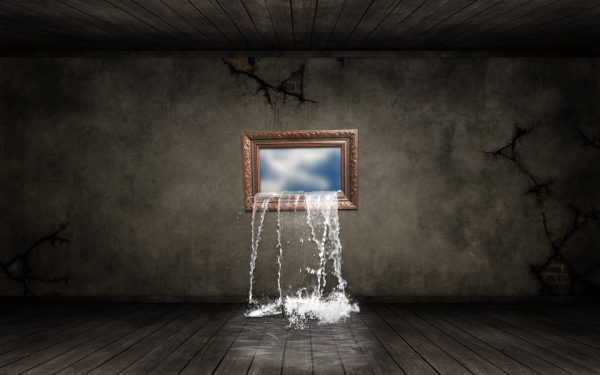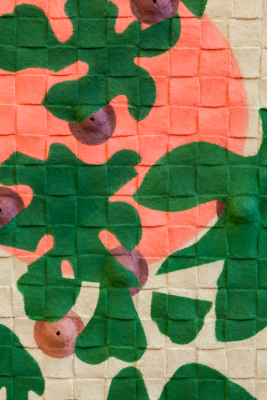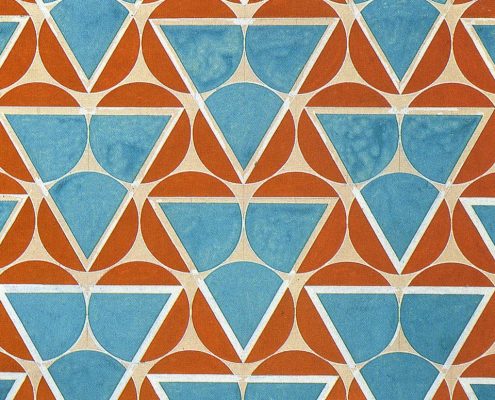I want to tell a story about an old man, a man who no longer says a word, has a tired face, too tired to smile and too tired to be angry. He lives in a small town, at the end of the street or near the crossroads. It is almost not worthwhile describing him, hardly anything distinguishes him from other men. He wears a grey hat, grey pants, a grey jacket and in winter a long, grey overcoat, and he has a thin neck with dry, wrinkled skin, his white shirt collars are far too wide for him.
His room is on the top floor of the house, maybe he was once married and had children, maybe he used to live in another town. Certainly he was once a child, but that was at a time when children were dressed like grownups. One can see them this way in the grandmother’s photo album. In his room there are two chairs, one table, a rug, a bed, and a cupboard. On a small table stands an alarm clock, next to it lie old newspapers and the photo album, on the wall hang a mirror and a picture.
The old man would take a walk in the morning and a walk in the afternoon, exchange a few words with his neighbour, and in the evening sit at his table.
This never changed, it was the same even on Sundays. And when the man sat at the table, he would hear the clock ticking, always the clock ticking.
Then there came a special day, a sunny day, not too hot, not too cold, with birds chirping, friendly people, children playing – and the special thing was that suddenly the man liked all this.
He smiled.
‘Now everything will change,’ he thought.
He undid the top button of his shirt, took his hat in his hand, quickened his pace, even had a spring in his step as he walked, and was happy. He entered his street, nodded to the children, arrived in front of his house, climbed to the top of the stairs, took the key out of his pocket, and unlocked the door of his room.
But in his room everything was the same, a table, two chairs, a bed. And when he sat down, he heard the ticking again, and all his happiness left him, because nothing had changed.
And the man was overcome with rage.
He saw in the mirror that his face was turning red, his eyes were squeezing shut; then he clenched his fists, lifted them up, and struck the tabletop with them, first only one blow, then another, and then he began to drum on the table and at the same time shout over and over:
‘It must change, it must change!’
And he could no longer hear the alarm clock.
Then his hands began to hurt, his voice failed, then he could hear the clock again, and nothing changed.
‘Always the same table,’ said the man, ‘the same chairs, the bed, the picture. And I call the table a table, I call the picture a picture, the bed is named bed, and people refer to the chair as a chair. But why, really? The French call the bed “lee”, the table “tahbleh”, they name the picture “tahblo” and the chair “shez”, and they understand one another. And the Chinese understand one another too.
‘Why isn’t the bed called picture,’ thought the man and smiled, then he laughed, laughed until the neighbours knocked on the wall and shouted ‘Quiet!’
‘Now it’s changing,’ he shouted and from now on called the bed ‘picture’.
‘I’m tired, I’ll go to picture,’ he would say, and in the mornings he would often remain lying in picture for a long time and reflect on what he would now call the chair, and he named the chair ‘alarm clock’.
So he got out of bed, dressed himself, sat down on the alarm clock, and rested his arms on the table. But the table was no longer called table, it was now called rug.
So in the morning the man would leave his picture, get dressed, sit down at the rug on the alarm clock and reflect on which things he could now call by what names.
The bed he called picture.
The table he called rug.
The chair he called clock.
The newspaper he called bed.
The mirror he called chair.
The clock he called photo album.
The cupboard he called newspaper.
The rug he called cupboard.
The picture he called table.
And the photo album he called mirror.
So:
In the morning, the old man would remain lying in picture for a long time, at nine o’clock the photo album would ring, the man would get up and step onto the cupboard so that his feet wouldn’t freeze, then he would take his clothes out of the newspaper, get dressed, look in the chair on the wall, sit down on the clock at the rug and leaf through the mirror until he came to the table of his mother.
The man found this fun, and he practised the whole day and memorised the new words. Now everything was renamed: he was no longer a man, but a foot, and the foot was a morning, and the morning a man.
Now you can go on writing the story yourself. And then you can do as the man did and interchange the other words:
ringing is called stepping,
freezing is called looking,
lying is called ringing,
standing is called freezing,
stepping is called leafing.
So that it reads:
In the man, the old foot would remain ringing in picture for a long time, at nine o’clock the photo album would step, the foot would freeze up and leaf onto the cupboard so that it wouldn’t look at the morning.
The old man bought himself some blue school notebooks and wrote them full of the new words, and this kept him very busy, and he was now only rarely seen on the street.
Then he learned the new terms for all things, and as he did so he forgot more and more the right ones. He had a new language that belonged only to him.
From time to time he would dream in the new language, and then he translated the songs from his schooldays into his language, and he sang them softly to himself.
But soon translating was also hard for him, he had almost forgotten his old language, and he had to search for the right words in his blue notebooks. And talking to people made him anxious. He had to think for a long time what people call things.
His picture people call bed.
His rug people call table.
His alarm clock people call chair.
His bed people call newspaper.
His chair people call mirror.
His photo album people call alarm clock.
His newspaper people call cupboard.
His cupboard people call rug.
His table people call picture.
His mirror people call photo album.
And it came to the point that the man had to laugh when he heard people talking.
He had to laugh when he heard the way someone said:
‘Are you going to the soccer game tomorrow, too?’ Or when someone said: ‘It’s been raining for two months now.’ Or when someone said: ‘I have an uncle in America.’
He had to laugh, because he did not understand all that.
But this is not a funny story.
It began sadly and it ends sadly.
The old man in the grey coat could no longer understand people, that wasn’t so bad.
Much worse was that they could no longer understand him.
And therefore he said nothing more.
He was silent,
spoke only to himself,
did not even greet them.
*
This piece was selected for inclusion in the 2017 Translation Issue by Daniel Medin, a contributing editor of The White Review. He is Associate Director for the Center for Writers and Translators at the American University of Paris, and an editor for The Cahiers Series and Music & Literature.
ABOUT THE CONTRIBUTOR
Peter Bichsel
, born in 1935 in Lucerne, became known for his debut collection of stories, And Really Frau Blum Would Very Much Like to Meet the Milkman (1964) and his first novel, The Seasons (1965), which was awarded the Gruppe 47 Prize. He has since authored more than twenty books and hundreds of columns for the Neue Zürcher Zeitung.LYDIA DAVIS is the author of one novel and eight story collections. She is the recipient of a MacArthur Fellowship and was named an Officier of the Order of Arts and Letters by the French government for her fiction and her translations of modern writers including Maurice Blanchot, Michel Leiris and Marcel Proust.




